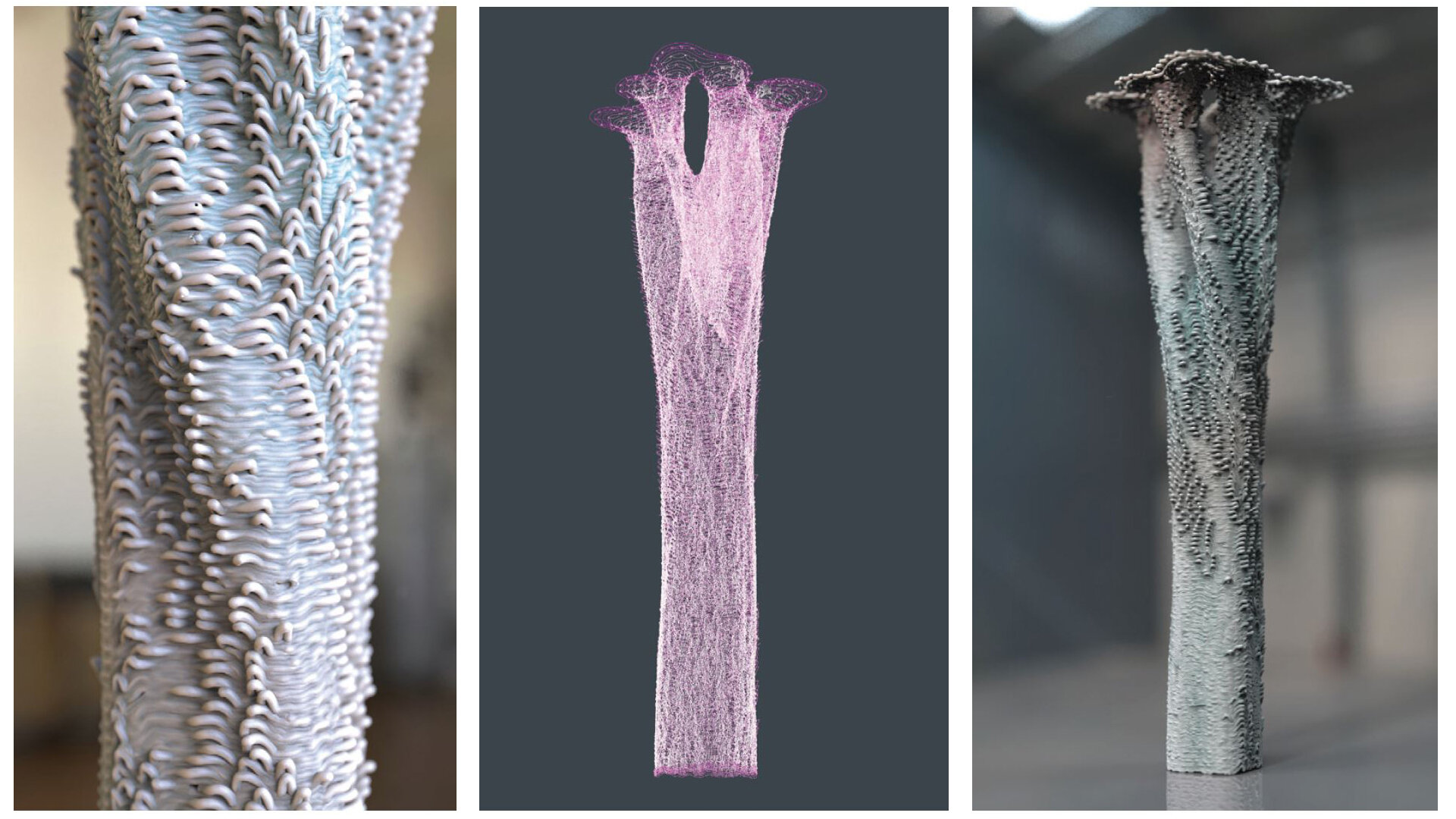matForm & matSim: Agent-based Design, Simulation & Analysis of Material effects during Additive Manufacturing
/AGENT-BASED CERAMIC ADDITIVE MANUFACTURING
Agent-based robotic extrusion and computational physics simulation method
Additive Manufacturing(AM) methods are being adopted in building construction due to their ability to provide reductions in time, cost and material waste, while offering increased aesthetic design flexibility. The most common large-scale AM method; continuous layered deposition, is typically used to create monolithic surfaces that do not take full advantage of the bespoke programmability robot manufacturing affords. While material dynamics and high-definition variable printing paths have been explored insmall-scale additively manufactured ceramics and concrete, these experiments are not easily scaled-up to building-scale assemblages, which would require means of visual or structural analysis prior to manufacture. The research addresses material formation in simulation and production through an integrative approach to design, structural analysis and fabrication. A custom software for robot extrusion tool path creation was developed that incorporates an adaptive agent-based robot deposition and physics-based material simulation method in order to leverage material dynamics relative to structural and formal design constraints to produce ornamental affects intrinsic to a developed production process. The method involved the development of two softwares; matForm to generatively design material-scale affects through custom robot tool path creation, and matSim, a material-physics simulator that outputs geometry suitable for visual and structural analysis.
Lead Researcher: Robert Stuart-Smith
Researchers: Patrick Danahy, Natalia Revelo, Sanjana Rao








